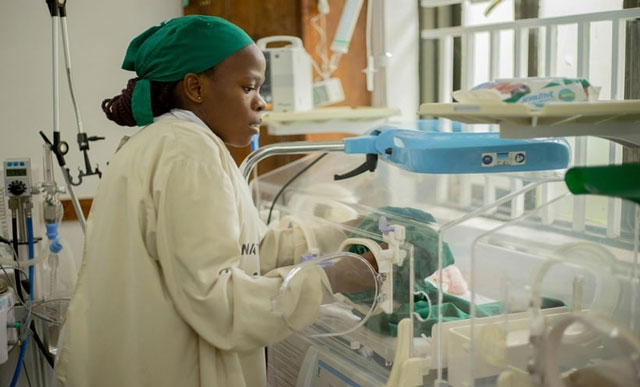Daijiworld Media Network – New Delhi
New Delhi, Nov 3: In a groundbreaking development, scientists have designed an automated tactile stimulation device (ATSD) named Breathing Operator for BaBY (BOBBY) to help preterm infants breathe more effectively. The innovative device aims to provide immediate and consistent tactile stimulation, reducing dependence on manual interventions by neonatal nurses.
Preterm infants often struggle with independent breathing due to immature lungs and underdeveloped respiratory control systems, leading to frequent pauses that require urgent attention. Traditionally, nurses use manual tactile stimulation to prompt infants to resume breathing — a method that, though effective, can be inconsistent and delayed.

The newly developed device, BOBBY, mimics the gentle touch provided by nurses during such critical moments, ensuring reliable and timely stimulation when cardiorespiratory monitor alarms are triggered. Researchers say this could significantly enhance breathing support for vulnerable newborns while easing the workload on neonatal staff.
Five-phase design process
The development of BOBBY involved a structured five-phase iterative design approach. In the discovery phase, researchers studied the unique respiratory challenges of preterm infants and the conditions of neonatal care. The define phase identified key user and technical requirements, followed by the ideate phase that produced multiple concepts and prototypes. These were refined through collaborative sessions with neonatal specialists, and the most promising design was chosen after extensive testing.
A notable feature of BOBBY is its “apparent tactile motion” technology, which replicates the gentle, rhythmic stimulation nurses typically use. The design ensures maximum effectiveness with minimal risk of skin irritation, maintaining strict safety standards by isolating electronic components from direct contact with the infant.
Potential for transforming Neonatal Care
According to researchers, BOBBY has the potential to revolutionize neonatal intensive care by delivering automated, timely interventions that promote spontaneous breathing. However, they emphasized the need for further clinical trials to establish the device’s safety, effectiveness, and long-term benefits in hospital settings.
By integrating automation into neonatal care, BOBBY could help reduce delays in response, improve breathing outcomes for preterm infants, and allow nurses to focus on other critical aspects of care — marking a major step forward in neonatal innovation.